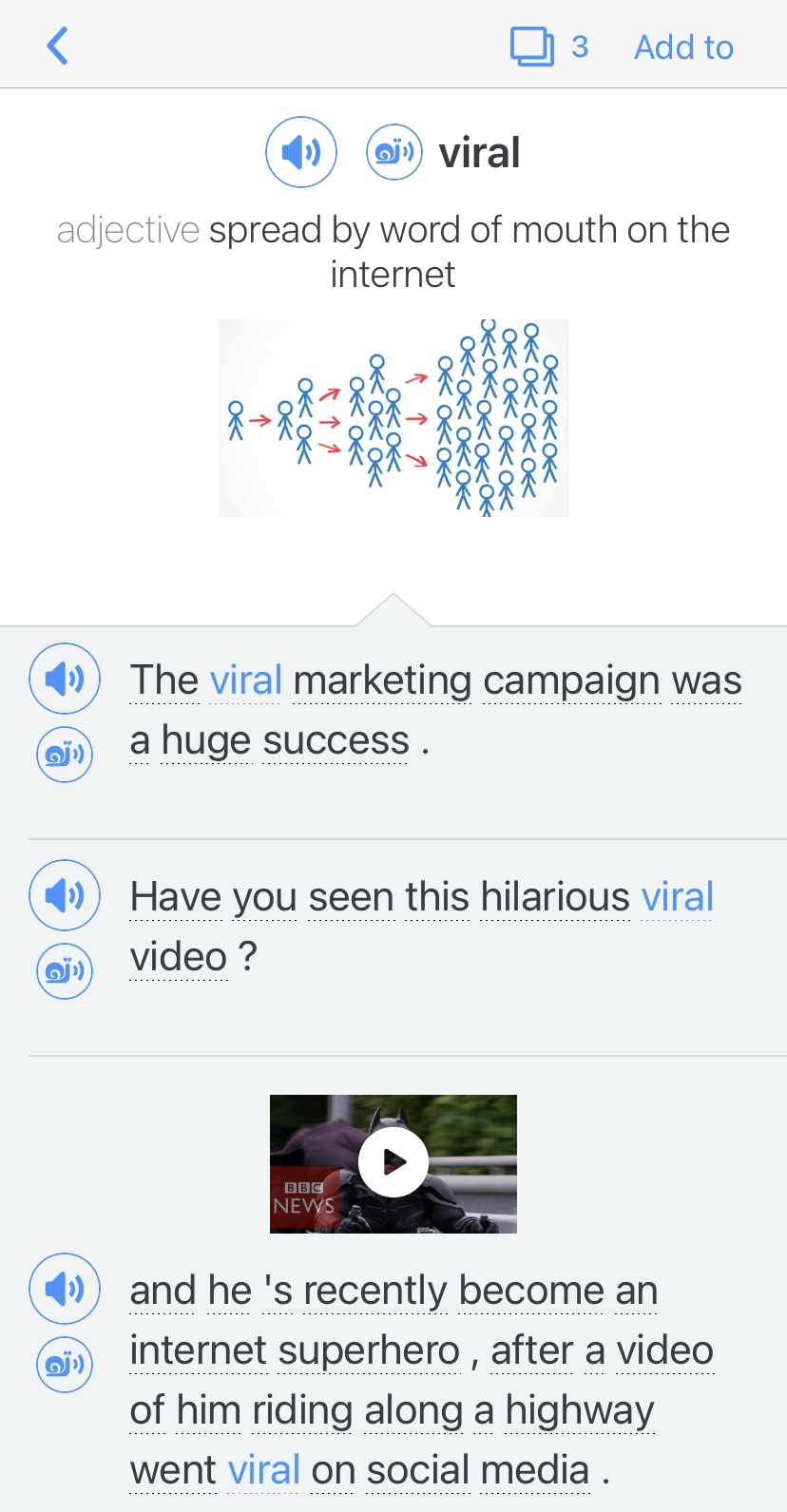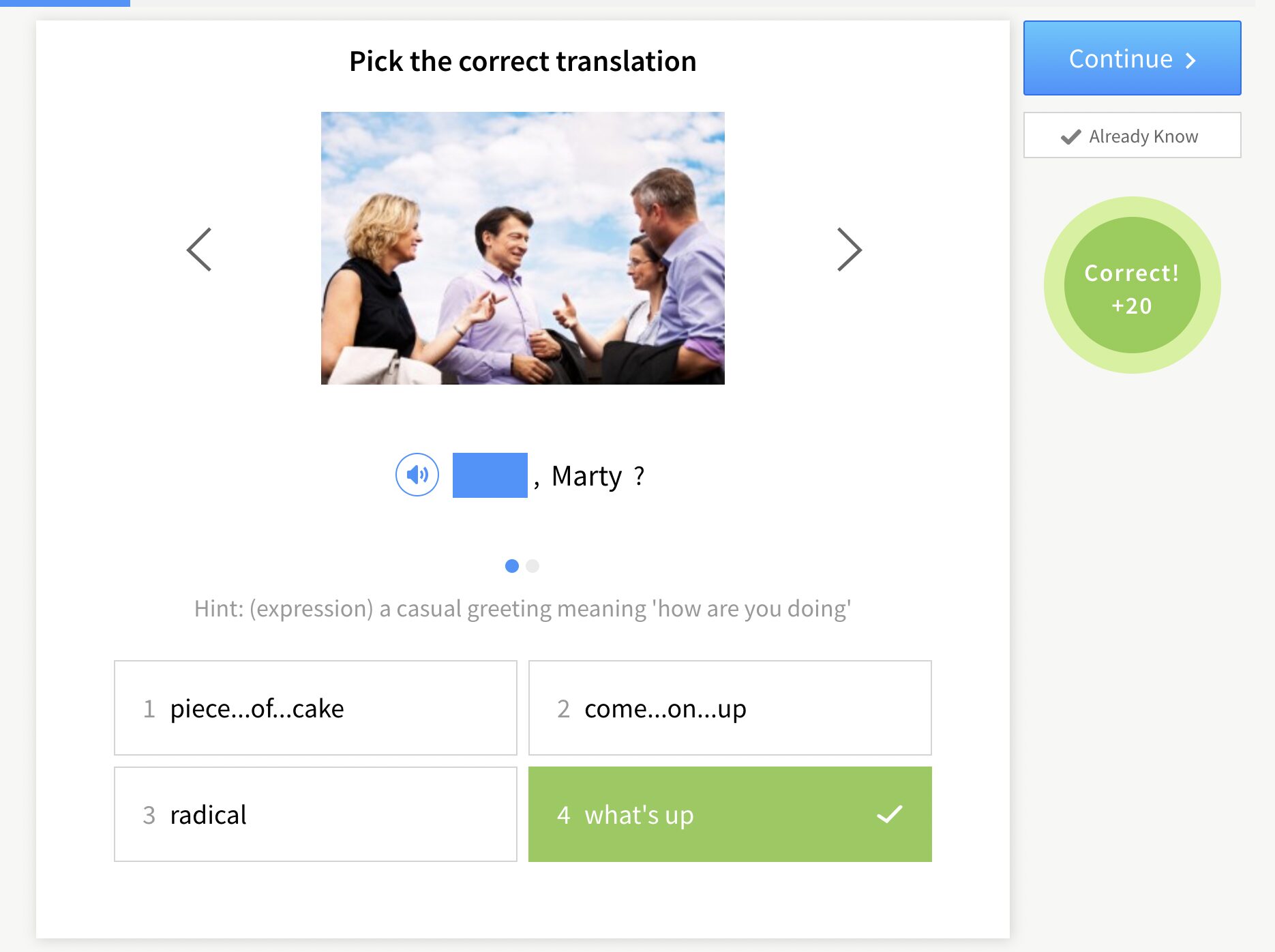Contents
- 1. Learn the Unique Features of American English
- 2. Learn to Pronounce the Letter R
- 3. Learn to Pronounce Your Ts and Ds Right
- 4. Don’t Forget the Schwa Sound /ə/
- 5. Be Careful of the Sound /j/
- 6. Practice Connected Speech
- 7. Learn Which Words to Use to Sound Natural
- 8. Use American Accent Training Videos
- 9. Watch American TV Shows
- 10. Watch American News Programs
- 11. Get Help from an Accent Tutor
- 12. Be Aware of Differences Between American and British English
- 13. Understand the History of the American Accent
- 14. Be Aware of Regional Differences in Accents Across America
- And One More Thing…
14 Tips to Learn American Accent Pronunciation

You don’t need a coach to learn the American accent. What you need is knowledge of the different American sounds, an understanding of how to make them and resources to help you practice.
So, if you want to talk like an American, we’ll show you fourteen effective ways to learn the American English accent and sound like a native speaker.
Download: This blog post is available as a convenient and portable PDF that you can take anywhere. Click here to get a copy. (Download)
1. Learn the Unique Features of American English
The main feature that separates the American accent from a lot of other accents in English is rhotic speech. This means that most Americans pronounce the r in words such as “ hard ” (har-d). You can hear it in Michelle Obama’s speeches:
Non-rhotic speakers don’t pronounce the r, and would pronounce the word “hard” like hah-d: hard
There are some exceptions, of course. Some Americans in the New England area of the US use non-rhotic speech.
Other features (properties) of the American accent include:
- The short a sound is used in words such as “man” and “cat.”
- The use of an unrounded (relaxed) vowel in words such as “lot” (pronounced laht).
- Dropping (not saying) words. American English speakers often use shortened sentences, suggesting words without actually saying them. In the UK, this is much less common. For example:
Jim: “Are you going to the store on your way home?”
Jan: “I could. What you need?” (I could go to the store. What do you need?)
What’s interesting about American English is the relationship between spelling and pronunciation isn’t always direct.
The same letter can have different pronunciations based on where it is in a word, and words can sometimes have very unexpected pronunciations.
2. Learn to Pronounce the Letter R
As we saw before, the General American accent is rhotic, meaning the letter r is always pronounced.
To understand the American R, try listening to these words:
The r sound in American English doesn’t use a “trill” like some other languages such as Spanish. Here’s an example:
If that seems tricky to pronounce, don’t worry! All you have to do is learn where to put your tongue.
When making the American English r sound, open your lips slightly and place your tongue right in the middle of your mouth, with the sides of your tongue touching your back teeth. Then, curl the tip of your tongue up toward the top of your mouth.
The trick is to make sure the tip of your tongue doesn’t touch anything, especially not the back of your teeth!
To practice this, try saying the word “ear.” Start with the e sound, then curl up the tip of your tongue. The sound should change from an e to an r like magic!
3. Learn to Pronounce Your Ts and Ds Right
The Letter T
The letter t is another example of a letter that’ll tell you if a person is from the States right away.
The first thing you have to remember about the letter t is that, in the American accent, it sounds like something between a d and an r when it’s between vowel sounds. Or, between a vowel and the letter l. (This is called t-flapping, and the IPA symbol is [ɾ]).
This is what happens in the following words:
In the last example, notice how this still happens between words if the t is between vowel sounds!
Another rule you need to remember about the American t is that if the t is the last letter of a word and it’s not followed by a vowel as we just saw, then the sound gets “cut” or “stopped.”
In other words, you get ready to pronounce it but stop the sound. Listen to some examples:
Finally, when you get a t sound before an n sound, you stop or cut the sound as before and change it into a hard n:
This rule can be more difficult to see because t and n won’t normally be together (for example, in the word fountain, you have ai between them). If you want to know more about this, listen to this podcast episode from the Seattle Learning Academy (the lesson starts at 1:30).
I suggest practicing with the words above until you sound exactly like the person in the audio. Then, you can search for more words with the letter t and practice those, too.
The Letter D
The letter d can also be flapped, like t. The rules are the same, but we call this d-flapping instead.
Although d-flapping is less common than t-flapping, we can still find a lot of examples of this happening in American English:
ladder (pronounced like letter )
pudding (pronounced like putting )
wedding (pronounced like wetting )
4. Don’t Forget the Schwa Sound /ə/
If I had to pinpoint one sound that will massively help you develop an American accent, it would have to be the schwa sound. It’s found in nearly every word!
When you listen to advanced learners who speak American English fluently but who don’t exactly sound like native speakers, it’s usually because they’re not pronouncing the schwa sometimes.
The schwa sound is called a lazy sound because you pronounce it in a really relaxed way: try saying “uh” while just keeping your mouth open a little. All of the vowels in English can be read as a schwa instead of their normal sound, usually if they’re in a syllable that’s not stressed or emphasized.
Let’s take a common word: “problem.” Just by reading it, you’d expect the pronunciation to be “pro-blem” because that’s how you pronounce e, right? In reality, the pronunciation is actually “pro-bluhm.” The e becomes a schwa sound!
Here are some other English words with the schwa sound:
away (pronounced like uh-way)
enemy (pronounced like e-nuh-my)
animal (pronounced like a-nuh-muhl)
doctor (pronounced like doc-tuhr)
lemon (pronounced like le-muhn)
Even in “ America ,” you have two schwa sounds: Uh-mer-i-kuh.
Since it’s tricky to guess when to use the schwa just by looking at an English word, you can check the pronunciation guide in dictionaries and look out for /ə/.
5. Be Careful of the Sound /j/
The sound /j/ can also give you information about a person’s accent. This is the j, ge or dge sound that you can hear in American English words like “ jump ,” “ gentle ” and “ judge .” (You can hear it twice in “judge”!)
Many American speakers don’t pronounce this sound after the letters d, n and t.
This is formally called yod-dropping, and it can easily be seen in everyday words such as:
You can watch the following short video to learn about the pronunciation of the word “new:”
6. Practice Connected Speech
With the American accent, native speakers don’t pause between every word much because they use a lot of connected speech.
These are the two most common ways it can happen:
Catenation
When a word ends in a consonant and the next word starts with a vowel, they’re pronounced without a gap between them.
To hear this in action, listen to the sentences below and focus on the bolded words. You’ll notice that they flow together, almost as if they’re one word.
I usually get up at 6 AM. (pronounced like getup)
She’s eating an egg. (pronounced like anegg)
Don’t take it personally. (pronounced like takeit)
Intrusion
When a word ends in a vowel and the next one starts with another vowel, there’s usually a “bridging” sound between them so the transition doesn’t sound too abrupt.
I’m ready if you are (pronounced like youware)
I am driving a car (pronounced like Iyam)
Can you free up some time for me? (pronounced like freeyup)
If you haven’t been practicing connected speech yet, try it out now with one of the sentences and compare how they sound when you apply connected speech and when you don’t. Connected speech might not be talked about as much in lessons, but it’s a major part of the American accent!
7. Learn Which Words to Use to Sound Natural
When speaking English (or any other language), you want to use the right words not to be misunderstood or to say anything rude or embarrassing.
Even though we’re not talking about pronunciation here, using the wrong word when you’re speaking can make you sound less “American.” On top of this, some words are also usually said with a specific intonation or body language.
The best way to pick this up would be to observe American English speakers closely. If you want to sound natural when you speak American English, knowing the right words to use is just as important as saying them correctly.
Below are some more specific examples of which words to use if you’re trying to speak American English.
American Slang
A lot of English learners have a problem understanding very informal conversations among young people because they’re full of slang words and expressions.
We can’t include all the slang words that exist in the US, but you can start your own list with these words:
to bail / to ditch — to cancel plans with someone
to slay — to do very well
tea — gossip
wack — boring
juiced — very excited (to do something)
swag — coolness
zonked — very tired
hyped — very excited
hit someone up — contact someone
vanilla — ordinary/boring
“Have” and “Get”
American speakers often use “have” when they’re talking about possessions. Here’s how it works with negative sentences and questions:
I don’t have a car.
Do you have a car?
In addition, the past participle (third form of the verb, used in perfect tenses) of the verb “get” is “gotten” in American English. Here are a few examples:
He’s gotten himself a new car.
He’s gotten taller.
American English also uses “have got” for emphasis:
You’ve got to see this!
You’ve just got to read this book, it’s so good.
American Informal Contractions
These informal contractions have become very popular lately thanks to music, movies and TV programs.
There are a lot of teachers who will tell you not to use these types of words during class or when you’re writing in general. But you’d use them when you’re speaking to friends, texting, writing on social media or in other informal interactions.
Here are some common examples:
gonna — going to
I’m gonna go now. — I’m going to go now.
wanna — want to
We don’t wanna go. — We don’t want to go.
gotta — got to/have to
I gotta go. — I have to go.
kinda — kind of
That’s kinda funny. — That’s kind of (a little) funny.
sorta — sort of
I sorta like it here. — I sort of like it here. (I like it here but not too much)
8. Use American Accent Training Videos
American accent training is available from many different sources on the internet to help you learn the American English accent.
Below, I’ve listed some sources where you can start.
Speaking Your Best, Inc.
Recommended for: Improving your American English accent based on your native language
Speaking Your Best is a free online course run by a licensed speech pathologist.
There are specific accent guides for native speakers of different languages, including French, Spanish, Chinese, Indian, Japanese and Russian.
You’ll learn general advice, like why it’s important for American English learners to speak slowly, as well as how to say very specific sounds like an American.
Learn English with Let’s Talk
Recommended for: Daily videos about speaking English to keep you on track
This YouTube channel uploads new videos every other day.
They focus on helping English learners speak with a neutral accent. Their videos include helpful tips and fun facts to make accent mastery (control of a skill) fun.
Along with accent help, you’ll also get vocabulary and grammar English tips.
Amy Walker’s “How to Do an American Accent” Series
Recommended for: Fun pronunciation and speaking lessons that are based on acting
While Amy Walker isn’t an English language teacher, her series is fun and useful for English learners.
Amy Walker is an actress, so the methods she teaches are the same that actors use to create the convincing (easy to believe) accents you see on TV and in movies.
9. Watch American TV Shows
You can hear different American accents in American shows, though you’ll typically hear something close to the Midwestern or General American accent.
The suggestions listed below are useful for English learners because they’re popular and use everyday language. You can find these shows on DVD or online. You may even be able to access some episodes on YouTube.
You can find even more suggestions here.
“Friends”
Summary: A classic show from the ’90s, “Friends” features the funny, everyday lives of six close friends.
Where to watch: Amazon Prime | HBO Max
“Friends” was (and still is) one of the most popular sitcoms (situational comedies) in the US. It takes place in New York City, and many of the themes in the program are relatable, from trying to find a job to going through all of the stages of a relationship and starting a family.
Because there’s a lot of slang and fast speech, there might be times when you don’t understand a scene completely, or you’re pausing a lot to look up words. Use subtitles to help you along. You can also find scene breakdowns on our YouTube channel.
“Full House”
Summary: A widowed dad gets his comedian best friend and rock musician brother-in-law to help him take care of his three daughters.
Where to watch: Amazon Prime | Apple TV
“Full House” is another sitcom that’s seen all over the world.
The characters range from children to adults, so many of the stories are interesting to the entire family. “Full House” is so popular that some have learned English by watching it!
Sitcoms like “Friends” and “Full House” are good for English learners because they’re short and incorporate everyday problems into storylines. They also use a lot of physical humor that’ll help you understand what’s going on even if you can’t follow the dialogue at first.
“The Simpsons”
Summary: “The Simpsons” portrays typical American life from a funny perspective, through a family with all sorts of misadventures.
Where to watch: Amazon Prime | Disney Plus
Episodes are shown all over the world and the characters are so popular that they’ve introduced new expressions into American culture.
Any American you meet will be familiar with “The Simpsons.” Some English learning programs even incorporate “The Simpsons” into their lessons.
Note that “The Simpsons” generally uses a lot of topical (related to current events) and cultural references, so it may be better for advanced learners.
10. Watch American News Programs
News programs from the US are a great source of American accent audio. For the best experience, try national news programs such as the ones listed below. National news anchors (presenters, reporters) tend to have the General American accent.
If you know you’ll be traveling to a region with a strong local accent, such as the South or West, look for videos from local news stations in those areas. You may hear some localized accents.
11. Get Help from an Accent Tutor
Tutors are always the best resource because they can help you with your own specific pronunciation needs. The following tutors or language services specialize in helping people learn the American English accent.
American Accent Course

Recommended for: Structured learning
This American accent audio course is an online program that you can access whenever it’s best for you.
You’ll receive listening exercises and lessons in rhythm and pronunciation. You’ll also get quizzes on your progress. Live tutors are also there to help you with difficulties and to offer more help.
Cambly
Recommended for: Feedback from tutors

Cambly is a course you can use online or on your mobile device. It offers a free trial option to see if it’s the right course for you.
Cambly allows you to practice English conversation with a tutor so you can get immediate feedback on your accent.
Rachel’s English
Recommended for: Detailed video lessons
Rachel is an English teacher who specializes in helping learners improve their American accent. While she provides a lot of paid material, her website also features over 400 free videos to get you started.
12. Be Aware of Differences Between American and British English
With British and American English, the differences between accents can be seen in specific letters being pronounced differently, like sh becoming sk or a change in the syllable that gets stressed. But there are also words that are just pronounced differently.
Of all the words that are pronounced differently in British and American English, the following 10 are especially interesting:
British and American English can also sometimes use different words to talk about the same thing. It’d be impossible to include a complete list of Britishisms and Americanisms in this post, but the following words are a perfect example of how different they can be:
chips (UK) / French fries (US)
crisps (UK) / potato chips (US)
fit (UK) / attractive (US)
underground (UK) / subway (US)
There are a lot of fascinating differences between British and American English, so if you want a more detailed list, you can check out this guide.
13. Understand the History of the American Accent
Let’s talk a bit about the history of the American Accent.
While around 1.5 billion people speak English, most English speakers aren’t native speakers. The American accent is what English learners (non-native) commonly want to learn.
The American accent is actually older than the UK accent. The American accent as we know it today was the accent spoken by the settlers (colonists, immigrants) who first landed in what’s now the US.
But around the 19th century in the UK, the upper classes wanted a way to distinguish themselves (be different) from the poor. With time, the accent they developed spread all over the region. The result is the UK accent, which is different from the American accent, due to its unique sounds.
14. Be Aware of Regional Differences in Accents Across America
American English sounds different in different regions of the country. If you visit Southern US, New York City or California, they’ll all be speaking American English, but they’ll all sound pretty different!
That’s because different areas of America have their own accents—there isn’t just one simple accent that everyone across America shares.
Below are some features of regional differences you can find there.
The Southern Accent
Also known as a “Southern drawl” or “country accent,” the Southern American English accent is usually slower, with elongated words and vowels.
Southern pronunciations of words include git (get) and lemme (let me).
For a good example of American accent differences, consider this:
Some schoolchildren hear a rhyme from their teachers when they don’t get what they want.
In the Northern part of the US, teachers might say, “You get what you get and you don’t be upset.” In the South, children may hear “You get what you get and you don’t throw a fit.” (“Fit” being another word for tantrum or anger). Both rhyme!
You’ve probably heard the Southern accent in movies and shows where a character is meant to clearly be from the South. Just know that there are variations even in the Southern accent! Southern American people will sound different depending on what part of the South they’re from.
Where to hear a Southern accent:
- TV shows set in the south like “True Blood”
- American country-western music artists such as Carrie Underwood, LeAnn Rimes and Tim McGraw
The Midwestern Accent
The Midwestern accent, sometimes known as the neutral, or General American accent, is the accent often heard in American entertainment. It’s spoken across many of the central states of the country.
The Midwestern accent makes use of the rhotic speech I mentioned earlier. It also uses something called the caught-cot merger, which is just a fancy way of saying that words such as caught, with the au sound, and cot, with the short o sound, are pronounced the same.
If you’re trying to learn an American accent, this is probably the best option. You’ll hear it in many shows and movies (so it’s easy to find content to study with) and you’ll be understood everywhere in the US.
Where to hear a Midwestern or General American accent:
- For an exaggerated, strong version of the accent, watch the movie “Fargo”
- For a more neutral version, watch national news programs such as CNN
The New England Accent
The New England accent is also known as the “Boston accent.”
This regional accent uses non-rhotic pronunciations (the r isn’t pronounced after vowels). A famous phrase that demonstrates this accent is Pahk yuh cah in hah-vud yahd (Park your car in Harvard Yard).
Where to hear the New England Accent:
- TV shows or movies set in this region such as “Family Guy”
- Movies set in Boston like “Spotlight” and “Good Will Hunting”
The New York City Accent
The stereotypical “New York” accent may be disappearing, but you can still hear some natives use it from time to time.
The New York accent also has non-rhotic elements. They may also use round, short vowels like a. For instance, “father” becomes faw-thuh and “dog” becomes daw-ug.
Where to hear the New York City accent:
- Gang movies set in New York City like “Gangs of New York” and “Goodfellas”
- The character Joey in the TV show “Friends”
And that’s everything for today, my friends!
Speak with your American friends, tutors or teachers, and use the American accent training resources and tips above. You’ll be talking like you’re from the States in no time.
Stay curious and happy American accent learning!
Download: This blog post is available as a convenient and portable PDF that you can take anywhere. Click here to get a copy. (Download)
And One More Thing…
If you’re like me and prefer learning English on your own time, from the comfort of your smart device, I’ve got something you’ll love.
With FluentU’s Chrome Extension, you can turn any YouTube or Netflix video with subtitles into an interactive language lesson. That means you can learn from real-world content, just as native English speakers actually speak.
You can even import your favorite YouTube videos into your FluentU account. If you’re not sure where to start, check out our curated library of videos that are handpicked for beginners and intermediate learners, as you can see here:
FluentU brings native English videos within reach. With interactive captions, you can hover over any word to see an image, definition, and pronunciation.
Just click on the word to see other example sentences and videos where the word is used in different contexts. Plus, you can add it to your flashcards! For example, if I tap on the word "viral," this is what pops up:
Want to make sure you really remember what you've learned? We’ve got you covered. Practice and reinforce the vocab from each video with learn mode. Swipe to see more examples of the word you’re learning, and play mini-games with our dynamic flashcards.
The best part? FluentU tracks everything you’re learning and uses that to create a personalized experience just for you. You’ll get extra practice with tricky words and even be reminded when it’s time to review—so nothing slips through the cracks.
Start using the FluentU website on your computer or tablet or, better yet, download our from the App Store or Google Play.
Click here to take advantage of our current sale! (Expires at the end of this month.)












